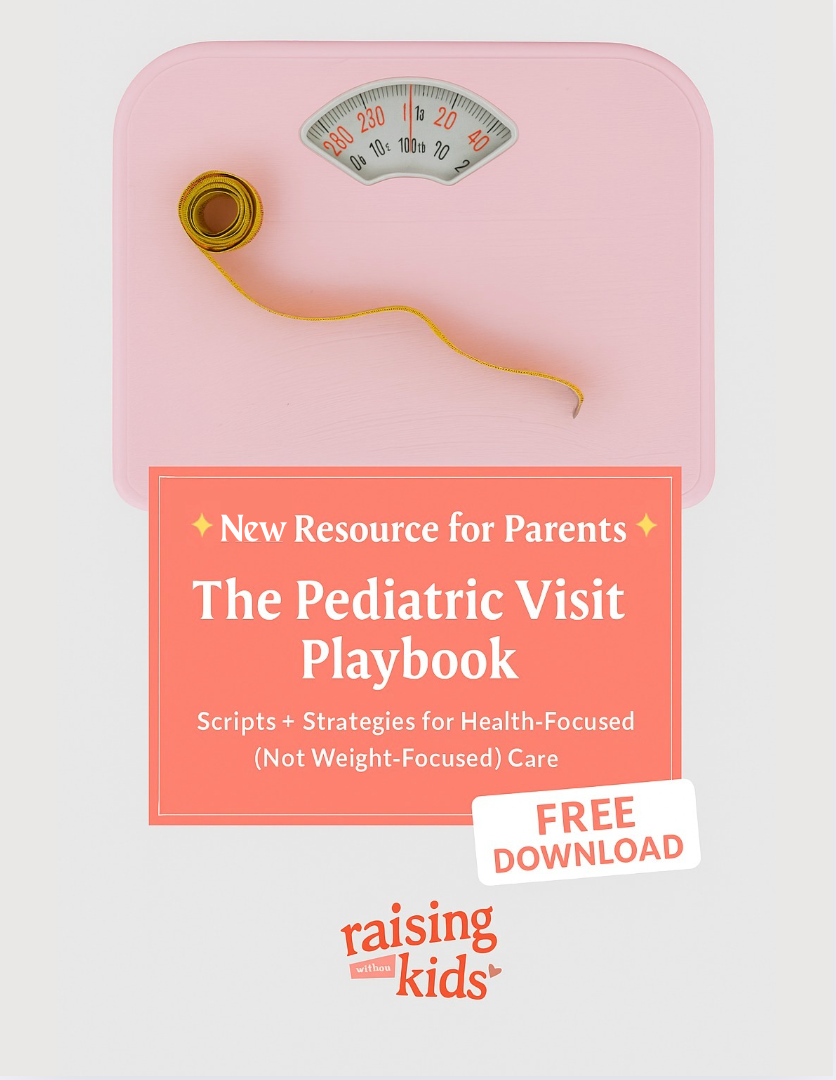EPISODE TAKEAWAYS:
- You don’t need to be a top chef when you’re also a working mom (unless you want to be).
- Simple solutions for managing and organizing mealtimes for your family, while keeping health and nutrition top of mind.
- Tips and tricks for every age group, from new babies starting solids to hangry teenagers.
- The following is an excerpt from
The Working Mom Blueprint: Winning at Parenting Without Losing Yourself
WHAT'S INSIDE:
READ THE ENTIRE TRANSCRIPT BELOW
"You don’t have to cook fancy or complicated masterpieces— just good food from fresh ingredients."
–Julia Child
Every Monday through Friday evening after work, work- ing mom Marissa has a set routine. She clocks out at 6:00 pm from her job as a teller at the local credit union, walks to her car, and calls her kids. And almost every Monday through Friday, like clockwork, they ask her the exact same thing: “What’s for dinner?” Sometimes Marissa’s prepared with a quick answer or idea. “There are leftovers on the top shelf,” or “Check the cupboard for spaghetti — do we still have some left?” Most nights, though, she finds herself creating a plan on the spot.
I don’t mean to be so last-minute about it, it’s just, my kids may have food on the brain all day every day, but I sure don’t. From the minute I arrive at the office to the minute I leave, I’m thinkingabout providing good customer service and accurately counting out bills. The last thing that pops into my mind is how to get a hot meal on the table in the middle of all that...until about 6:05 when the kids remind me, that is.
Marissa’s in good company. Although we all want to consistently feed our kids nutritious meals in a way that promotes a healthy relationship with food and creates times for positive family interactions, actually doing it is quite another feat for busy working moms. Answering the question “What’s for dinner?” doesn’t have to be so daunting, though, especially when you focus on savvy meal planning, efficient preparation, and family mealtime enjoyment.
Savvy Meal Planning
Keep Midweek Meals Simple
First things first: let yourself off the hook. You are not a full-time home chef. You are a working woman, and your time is more limited than it is for other moms. Don’t feel bad if you can’t provide a freshly cooked meal every night from scratch. Sometimes calling the whole thing off and ordering cheap takeout is the way to take care of your family holistically — both your mental and your physical health. If you do order out, choose the healthiest options possible whenever possi- ble, knowing that sometimes, even that can be too much on a particularly hard day.
When you do cook, choose some go-to meals you know will be quick and easy for the nights you work and meal preparation seems most exhausting. At my house, it’s chicken and broccoli Mondays, grilled fish taco Tuesdays, and stir-fry Wednesdays. To make my life even easier, I buy high-quality meat in bulk and freeze it. The night before I need it, I put what I need for the next night in the refrigerator to thaw so I can add grains, vegetables, and side dishes easily when I come home from work.
Working mom Liselle works part time as a newborn photographer. She meets clients at odd hours — before and after work or on the weekends — so that she’s available for school drop-off and pickup for her twin third graders. She tries to keep the fridge stocked with healthy snacks, but putting together a complete meal while the boys ask for homework assistance and she edits photos or tries to juggle client appointments feels overwhelming, especially on days they have soccer practice. She’s learned to keep it simple midweek. “I have my weekday standards,” she says. “They’re not fancy, but they work.”
Use the Weekends for More Extensive Cooking
On weekends, when you have more mental bandwidth to enjoy experimenting with new recipes, that’s your chance to refine your culinary prowess, if that’s your thing. Consider using more relaxed times to create family memories around meals as well, like Saturday morning pancakes and eggs or Friday night backyard cookouts.
Use family mealtimes
to instill a sense of comradery and to develop a routine of household chores. Elementary school–aged children can help with clearing and setting the table, washing dishes, and running the dishwasher.
Spend time on more extensive meal preparation and planning Saturdays or Sundays, and make large double batches of 2 separate meals that can easily be reheated later. Eat half of the first meal Sunday evening, then half of the second meal Monday. On Tuesday and Wednesday, eat the leftovers. You’ll get 4 days’ worth of dinner for only 1 day of effort. Working mom Pilar, a seasoned mom of 4, told me when her kids were little she started cooking this way and still does when the oldest is home from college break!
Shop Online
Consider online grocery shopping as a way to build efficiency and to spend less overall on your food budget. Sometimes when you’re at the grocery store in person, that shopping
cart fills up pretty quickly, especially when you have kids in tow who just need that extra box of cereal. Grocery shopping when you are hungry is never a good idea, as you always tend to put more items in your cart than you really need. I’ve been surprised by my total at the checkout more than a few times, but it can be embarrassing or just inconvenient to return what I’ve selected to the checker.
Online grocery shopping can give you more control financially. As you fill your cart virtually, it’s easy to see your running total and to adjust if you need to before you submit your payment. Online shopping also allows you to shop from multiple stores efficiently. Use big-box grocery stores for pan- try and refrigerator staples, and purchase specialty or harder-to-find items from local markets or traditional grocers.
“I live and die by Instacart and Amazon Prime,” working mom Sylvia told me in the clinic a few weeks ago. She has 3 kids — a 7-year-old, a 9-year-old, and a 12-year-old — and works part time as a hair stylist. “I don’t how moms managed before online shopping existed.”
Avoid Prepackaged Meals
Avoid fully prepackaged meals when possible. Many have high sodium content (which you want to stay away from) and can taste bad once in the freezer for extended periods of time. Often you can make the same types of meals just as easily by purchasing separate packages of frozen veggies and meat, then adding your own sauce for less sodium overall.
Resist purchasing large quantities of sugary snacks too, so they’re not as readily available to you or your family when hunger strikes and cravings kick in. When my youngest daughter turned 3 and developed a penchant for sneaking the marshmallows we purchased for summer camping trips from our pantry, we decided to get rid of them altogether. Same went for candy, ice cream, and salty chips. When we do buy them now for special occasions, it’s more intentional and enjoyable.
Creating a Healthy Relationship With Food for Your Family
Babies Ready to Start Solid Foods
Offer as Many Varied Foods as Possible From an Early Age
The American Academy of Pediatrics recommends starting solid foods at about 6 months of age. They also recommend waiting 2 to 3 days between new foods to observe your infant for any allergic reactions. But, starting at about 6 months, there are no limitations on what these foods can be (except no honey and no cups of cow’s milk until 1 year of age). There are no “adult” flavors and “baby” flavors, just kid and baby consistencies. Why not offer pureed mushrooms, eggplant, artichokes, kale, or yams? In fact, the American Academy of Allergy, Asthma, and Immunology now rec- ommends even highly allergenic foods like shellfish, dairy, peanut butter or peanut containing snacks, and eggs be introduced earlier versus later. We know that food preferences start even within the womb and that giving our children a wide variety of flavors and textures early on promotes a diverse palate and healthier lifelong nutrition.
Don’t Give Up Too Soon
An expression of disgust does not predict a life of hatred. It can take multiple exposures before babies develop an affinity for a new flavor. Working mom Jamie’s daughter’s first food was avocado. She has pictures of Remy’s sweet little face just covered in it at 6 months, with a look of utter displeasure. She spat that food out as fast as Jamie could get it to her lips. Of course, Jamie didn’t force it on her that day, but every week she reintroduced a small amount as part of the other foods she offered. With Remy at 1 year of age, Jamie took another picture of Remy’s face covered in a green gooey mess, this time with a look of complete glee. Avocado became and still is her favorite food to eat.
Toddlers
Model Good Behavior
Your kids are listening to what you say, noticing how you treat other people, and, yes, watching what you eat. That means that if you want them to eat more healthily, you might need to adjust what food is on your plate. It won’t work to have you order a cheeseburger and a soda every time you go out as a family if you want your kids to eventually do the opposite. You may need to take stock of what you yourself are consuming. If you eat healthy, high-quality foods, it allows your children to see healthy, high-quality foods as normal.
Remind Yourself of the Responsibilities You and Your Child Each Bring to the Table
As a parent, your responsibility is to provide healthy options for your child at consistent intervals during the day. The child’s responsibility is to choose how much of any given food to eat at any given time. Offer healthy options, and let your child choose what he or she wants to consume from those offerings. If your child decides he or she doesn’t want the green beans tonight? That’s OK. Just don’t offer a replace- ment food when she won’t eat them, and definitely don’t use those beans as a reward for dessert.
Remember That Most Kids Go Through Phases When They’re More Picky About What They Eat or Less Interested in Food Overall
Sometimes in a toddler’s mind, green equals poisonous plant (or just equals new thing I’ve never tried before), which equals bad. Instead of creating power struggles at one isolated meal, instead take the long view: raising individuals who savor what they consume, who use it as fuel to drive their lives, and who have the freedom to enjoy it fully.
Grade School and Older Children
Follow these recommendations from the American Academy of Pediatrics for grade school children to make sure your children get the nutrients they need throughout the week.
These five groups and typical minimum servings are:
Vegetables: 3–5 servings per day. A serving may consist of 1 cup of raw leafy vegetables, 3/4 cup of vegetable juice, or 1/2 cup of other vegetables, chopped raw or cooked.
Fruits: 2–4 servings per day. A serving may consist of 1/2 cup of sliced fruit, 3/4 cup of fruit juice, or a medium- size whole fruit, like an apple, banana, or pear.
Bread, cereal, or pasta: 6–11 servings per day. Each serving should equal 1 slice of bread, 1/2 cup of rice or pasta, or 1 ounce of cereal.
Protein foods: 2–3 servings of 2–3 ounces of cooked lean meat, poultry, or fish per day. A serving in this group may also consist of 1/2 cup of cooked dry beans, one egg, or 2 tablespoons of peanut butter for each ounce of lean meat.
Dairy products: 2–3 servings per day of 1 cup of low- fat milk or yogurt, or 11/2 ounces of natural cheese.
From the American Academy of Pediatrics. Making healthy food choices. HealthyChildren. org. Updated May 28, 2020. Accessed November 16, 2020. https://www.healthychildren.org/ English/ages-stages/gradeschool/nutrition/Pages/Making-Healthy-Food-Choices.aspx
Encourage Your Children Whenever Possible to Help You With Making Meal Plans and Preparations
Go to the library or look online with your kids to find recipe collections they’re excited about. Pick a favorite cookbook or family-friendly cooking website and work your way through it together to avoid ruts. Use lazier days when you’re not working and they don’t have extracurricular activities planned to spend time mixing and mincing in the kitchen. Allowing young kids to contribute to family food preparation contributes to healthier eating overall. (For more informa- tion, see “Tips and Tricks to Involve Young Kids in Family Meal Preparation” box later in this chapter.) Your kids will be more willing to try foods that they helped prepared.
Give Older Kids the Responsibility of Planning, Purchasing, and Preparing a Full Meal for the Entire Family Once a Week as an Opportunity to Contribute
Give them parameters for including a variety of food groups. Have them join you to add all the ingredients they need to your virtual shopping cart, or bring them with you to the grocery store. Then, have them choose a new recipe for the next week.
Grow a Garden, Even if It’s a Mini One
Kids who help grow and make their food have a more rich experience with source ingredients and are often less picky. Even 3-year-olds can help you garden. Let them taste test the mint or cherry tomatoes directly from your backyard plants after you wash them. They can even help you decide what seeds to buy early in the season, creating even more buy-in. If you don’t have an outdoor space or room for a garden, consider a windowsill herb garden. Take your kids to farm- ers markets to expose your children to where their food is coming from.
Working mom Carla told me, “I can remember the first time Jaun saw all the produce. He just loved trying all the fruit and vegetable samples and talking to the vendors. We made going to the farmers market a Saturday morning tradition starting at 1 year old.”
Working mom Monique struggled with finding inexpensive ways to feed her son and daughter healthily without relying on fast food when she became a parent. When she was growing up, her parents relied on drive-through meals most mornings on the way to school. “I try to make home- cooked meals as much as possible, but the convenience of a drive-through is always there, since I’m usually not even thinking about dinner until I leave my job at my company’s fulfillment center every day. Now, when I do go to fast food, I try my best to think about avoiding fried options and looking for fruits and vegetables or for proteins with less fat.”
Always remember to pre pack a lunch box with a cooler pack in it to store items like pre cut cucumber slices or carrots, cubed cheese, lean meat, or yogurts from your own fridge when you’re on the go for after-school activities with older kids or child care or preschool pickup with little ones. “I always offer a fresh snack first,” says working mom Lauren, a mom of 3, “but I keep backup prepackaged snacks like whole grain crackers or roasted nuts with me in my purse and glove compartment in case we whip through our main stash. It’s better than having to stop with my teenagers on the fly.”
Make Mealtimes Enjoyable, Not Perfect
There are no place mats, and we only have paper towels for napkins. The dinner tonight? A take-and-bake barbecue chicken pizza and (because I’m a pediatrician) a large salad. It’s not even close to the healthiest meal we’ll have this year. We just moved back to our home after having lived at my parents’, and we’re celebrating. There are boxes piled high in the dining room, and we’re all covered in grime from unpacking and sorting all day. My arms are sore from rearranging furniture. Each time I lift them, they tell me how unhappy they are. But we’re happy because we’re here at last, sharing a meal together, laughing, and talking about what we’re most excited to re-explore in our own neighborhood. “Michael’s coffee shop!” the little one squeals. “No! That climbing structure at the playground! Mom, can we go there tomorrow? Please?”
My husband and I exchange grateful glances. Gosh, it feels good to sit here and eat this food together. Sometimes the most important part of what’s for dinner is what is actually for dinner— the food you consume and the love you put into creating it as a family. Sometimes it’s about teaching family responsibilities, and “can I be excused” before get- ting up, and “tell me about the good and bad of your day.” Sometimes, though, what’s for dinner is about the mood you set, the way you catch the cheese as it drips down your daughter’s chin, the giggles as your baby crawls into your arms, the pure enjoyment of being a family.
Not every meal you make will be perfectly nutritious. Some weeks you’ll barely be able to get food on the table, much less make sure its components are well-rounded. In seasons, you may get in a rut, stuck preparing the same foods again and again. You will most definitely pick the least healthy item on the menu at the drive-through from time to time and bring no snacks in the car when you need them most. That’s OK. Your goal as a working mom is to do the best you can when you can — in all areas of motherhood, but especially in this one — and to use efficiency tricks and pre- planning regimens as the tools they are, not as extra stress- ors. Sure, what’s for dinner is sometimes just about getting food on the table, but it can be about more than that if we don’t get caught up in doing it perfectly. If we have the right perspective, it can be about joy— coming together with the people we love most to unwind, to celebrate, or simply just to be.
THE MODERN MAMAS MEMBERSHIP:
Join the Modern Mamas Club
The Modern Mamas Club is a safe supportive space for like minded Modern Mamas who dream of having it all, to actually succeed in that dream and lift up other Mamas to succeed along the way. It is possible to thrive, not just survive in your work life, parent life and YOU life.
✓ A Community of Mamas to Support You
✓ 24/7 Access to Dr. Whitney's Video Library
✓ Live Events, Workshops, and Hangouts
✓ Relatable Mom Rooms and Discussions
✓ Resource Library and Dr. Recommendations
✓ Fun Weekly Mini Mom-Note Emails
✓ Weekly Challenges and Prompts
✓ Journaling Downloads and More!












